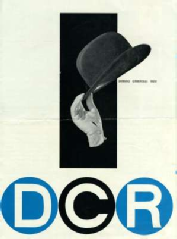© 2014-


DCR (Danmarks Commercielle Radio) - History
In mid 1961, despite Radio Mercur's continued success some senior staff thought that the owners' overriding desire to maximise profits was beginning to cause programme standards to fall. A number of senior personnel (Benny Knudsen)attempted to achieve what would have amounted to a management buy-
of senior personnel (Benny Knudsen)attempted to achieve what would have amounted to a management buy-
A new company was registered in Liechtenstein -
The new station -
As with Radio Mercur, DCR's programmes were pre-
DCR was on the air for 7 hours on weekdays, 13 hours on Saturdays and 15 hours on Sundays, covering all of Zeeland and part of Funen with its powerful transmitter.
However, after less than three months on the air the programming format failed to achieve real popularity either with listeners or advertisers. Listeners who wanted a music based alternative to the state network tuned to Radio Mercur and those who might have enjoyed the output of DCR preferred to stay with the state programmes, which didn’t have commercials. Consequently with low audience figures DCR could not attract sufficient advertising revenue to sustain its operation.
Also there were concerns on the political front that two offshore stations rivaling the state network would prove particularly unpalatable to the authorities – one station might just be accepted as an alternative -
One of the conditions for the merger was that joint Managing Director and co-
DCR ceased separate transmissions on 29th January 1962 and the Lucky Star began broadcasting the programmes of Radio Mercur.
DCR had become the first offshore radio station to close, and the first to do so without being forced either by legislation or action by the authorities.

Benny Knudsen

Click on picture to enlarge
Newspaper advert for DCR
Click to enlarge


History
Key Dates
Ship and Location
Technical
Staff
Programmes






Back to DCR

Back to Scandinavia Gallery

